Recent Models: 3D Conveyor Belt DWG Models
Conveyor belts play a pivotal role in the seamless operation of numerous industrial sectors, facilitating the efficient transport of goods and materials across various stages of production and distribution. These belts are the lifelines of warehouses, manufacturing plants, and distribution centers, ensuring that operations run smoothly and efficiently. In the realm of design and engineering, the availability of conveyor belt DWG files has revolutionized how professionals approach the planning and implementation of conveyor systems. These DWG files provide a detailed graphical representation, allowing for precise modifications and customizations to fit the unique needs of each project. For engineers and designers, the access to high-quality conveyor belt DWG files means a significant leap towards more accurate, efficient, and cost-effective conveyor belt solutions, marking a critical resource in their toolkit for designing and optimizing industrial conveyor systems.
What Is Conveyor Belt DWG File
A Conveyor Belt DWG file is a specific type of CAD (Computer-Aided Design) file that provides detailed graphical information about conveyor belt systems. These files are instrumental in the planning, design, and execution of conveyor belt installations across various industries. By utilizing DWG files, engineers and designers can visualize complex conveyor belt systems in two or three dimensions, allowing for precise modifications, optimizations, and implementations of these critical components in industrial operations.
What are DWG Files?
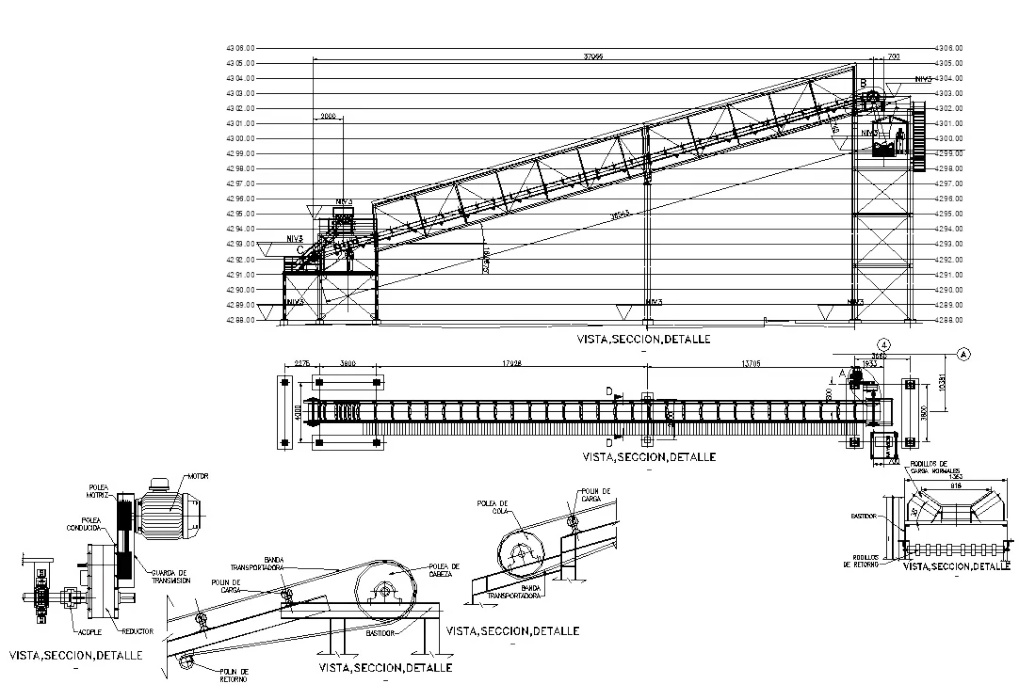
DWG files stand as a cornerstone in the realm of design and engineering, particularly when it comes to the detailed planning and execution of conveyor belt systems. Here are eight key points that elucidate the role and essence of DWG files:
- Definition: DWG files are a binary file format used for storing two and three-dimensional design data and metadata. They are the native format for several CAD (Computer-Aided Design) packages, including AutoCAD.
- Versatility: These files support both vector and solid geometries, making them incredibly versatile for designing complex conveyor belt systems.
- Precision: DWG files allow for high precision in design specifications, ensuring that every component of the conveyor belt system is accurately represented.
- Collaboration: They facilitate easy sharing and collaboration among team members, as DWG files are widely supported across different CAD platforms.
- Scalability: DWG files can manage extensive data without compromising on performance, crucial for large-scale industrial conveyor systems.
- Interoperability: The widespread acceptance of DWG files across various software platforms ensures seamless integration and interoperability between different design tools.
- Revision Control: They support detailed revision history, allowing engineers to track changes over the lifecycle of the conveyor belt design project.
- Customization: DWG files offer extensive customization options, enabling designers to tailor conveyor belt systems to specific industrial needs.
Importance of Conveyor Belt DWG Files
The significance of conveyor belt DWG files in the planning, designing, and implementing of conveyor systems cannot be overstated. Here are nine points that highlight their importance:
- Foundation for Design: They serve as the foundational blueprint from which all conveyor belt systems are conceptualized and built.
- Accuracy in Planning: Conveyor belt DWG files ensure accuracy in the planning phase, reducing the risk of costly errors.
- Efficiency in Design: They streamline the design process, enabling quick iterations and modifications.
- Cost Reduction: Accurate DWG designs help in minimizing waste of materials and resources, leading to significant cost savings.
- Enhanced Communication: DWG files improve communication among stakeholders by providing a clear visual representation of the conveyor system.
- Regulatory Compliance: They aid in ensuring that conveyor belt designs comply with industry standards and regulations.
- Simulation and Testing: DWG files can be used in simulations to test the efficiency and safety of conveyor belt systems before implementation.
- Maintenance Planning: They facilitate the planning of maintenance operations by detailing every component of the conveyor system.
- Future Modifications: Conveyor belt DWG files make future modifications and expansions of the conveyor system more manageable and less time-consuming.
Conveyor belt DWG files are indispensable tools in the engineering and design of efficient, reliable, and cost-effective conveyor belt systems. Their role in the lifecycle of a conveyor system, from planning through to maintenance, underscores their value to engineers and designers alike.
Key Features of Conveyor Belt DWG Models
- Plan View: Top-down Layout and Arrangement
- Overview: The plan view provides a comprehensive top-down perspective of the conveyor belt system. This view is crucial for understanding the overall layout and spatial arrangement of the conveyor within the operational environment.
- Components Displayed: In this view, all the primary components such as the belt, rollers, support structures, drive units, and any ancillary equipment are shown. This includes the placement of motor units, tensioning devices, and loading/unloading points.
- Utility: The plan view helps in visualizing the flow path of materials, planning the installation, and identifying potential interferences with other equipment or structural elements in the facility.
- Longitudinal Section: Lengthwise Cross-sectional Views
- Overview: The longitudinal section provides a side-view cross-section along the length of the conveyor belt. This perspective is essential for examining the profile and gradients of the conveyor system.
- Components Displayed: This section highlights the vertical alignment and elevation changes of the conveyor, including the height of supports, inclines, and declines. It shows the positioning of the drive and idler pulleys and the belt’s curvature.
- Utility: It is used for detailed analysis of the conveyor’s structural integrity, ensuring proper tensioning and tracking of the belt. It also aids in planning maintenance activities by showing how different sections of the conveyor are supported and accessed.
- Transversal Section: Width and Depth Details from a Perpendicular Angle
- Overview: The transversal section provides a cross-sectional view from a perpendicular angle to the conveyor’s length. This view is crucial for understanding the width and structural depth of the conveyor belt system.
- Components Displayed: This section displays the conveyor’s width, side guards, belt support frames, and any transverse structural elements. It also includes details of the troughing angle in case of trough belt conveyors.
- Utility: This perspective is essential for ensuring that the conveyor can handle the required load capacity and for designing protective guards and other safety features. It also helps in determining the spatial requirements for installation and maintenance access.
- Specifications and Designations: Technical Details Including Materials and Dimensions
- Overview: Specifications and designations in DWG models provide detailed technical information about the conveyor belt system. This includes material types, dimensions, and other critical engineering data.
- Components Displayed: This section includes specifications for the belt material (e.g., rubber, PVC), the tensile strength, belt thickness, and width. It also details the specifications for rollers, pulleys, motor power ratings, and structural materials used for supports and frames.
- Utility: Accurate specifications are essential for procurement, manufacturing, and ensuring that the conveyor system meets the operational requirements. They help in ensuring compatibility between different components and adherence to safety and performance standards.
Sources for Conveyor Belt DWG File
In the quest for designing and implementing efficient conveyor systems, engineers and designers often seek high-quality conveyor belt DWG files. These files serve as a critical resource, offering detailed designs that can be directly applied or adapted to specific projects. Below is an overview of seven platforms that stand out as valuable repositories for finding conveyor belt DWG files, including a mention of LineCAD for its downloadable resources related to conveyor belt systems.
- Bibliocad: A premier digital library for architects and engineers, Bibliocad hosts a vast collection of conveyor belt DWG files. The platform offers both free and premium content, catering to a wide range of conveyor system design needs.
- GrabCAD: Known for its extensive community of engineering professionals, GrabCAD provides access to thousands of free CAD designs, including conveyor belt DWG files. Its collaborative environment also allows users to share insights and feedback on designs.
- LineCAD: Offering a wide array of downloadable resources, LineCAD is an excellent source for conveyor belt DWG files. It provides detailed drawings that can be utilized in planning and designing conveyor belt systems.
- CAD Blocks Free: As the name suggests, this platform offers free CAD blocks, including conveyor belt DWG files. It’s an ideal starting point for designers looking for basic conveyor belt designs to customize.
- CADdetails: Aimed at the architectural and engineering sectors, CADdetails offers high-quality conveyor belt DWG files among its extensive library of CAD drawings. The platform focuses on providing detailed, manufacturer-specific drawings.
- TraceParts: An online CAD content platform, TraceParts offers a wide range of CAD drawings, including conveyor belt DWG files. It caters to various industries, providing detailed models that can be downloaded in multiple formats.
- 3D ContentCentral: Supported by a community of engineers and designers, 3D ContentCentral features a variety of free 3D and 2D CAD models, including conveyor belt DWG files. Users can contribute to and download from a diverse collection of CAD drawings.
Each of these platforms offers unique advantages, from community support and feedback to a wide range of file formats and detailed manufacturer-specific designs. Whether you’re in the initial stages of planning or deep into the design process, these resources provide valuable tools to help bring your conveyor belt projects to life. By leveraging the conveyor belt DWG files available on these platforms, engineers and designers can significantly enhance the efficiency, reliability, and cost-effectiveness of their conveyor system projects.

Types of Conveyor Belt DWG File Available
The realm of conveyor belt design and implementation is vast and varied, necessitating a range of conveyor belt DWG files to cater to different engineering and architectural needs. These DWG files come in various types, each serving specific purposes in the design and planning process of conveyor belt systems. Let’s delve into the details of the different types of conveyor belt DWG files available.
Belt Conveyor DWG File
Belt Conveyor DWG files are essential for the standard conveyor belt systems used across numerous industries. These files provide:
- Detailed Schematics: Offering precise dimensions and layouts of belt conveyor systems.
- Component Specifications: Including information on belts, motors, rollers, and other critical components.
- Installation Guidelines: Facilitating the correct assembly and installation of conveyor belts.
- Material Handling Solutions: Showcasing various designs tailored to different types of materials.
- Customization Options: Highlighting the adaptability of designs to meet specific operational needs.
- Safety Features: Detailing the incorporation of safety measures and emergency stop mechanisms.
- Efficiency Enhancements: Suggesting modifications for improving the efficiency and throughput of conveyor systems.
Conveyor Belt DWG Free Download
The availability of Conveyor Belt DWG files for free download democratizes access to high-quality design resources:
- Wide Accessibility: Ensuring that small and medium-sized enterprises can also benefit from advanced design tools.
- Community Contributions: Leveraging the collective knowledge and experience of a global engineering community.
- Rapid Prototyping: Allowing for quick iterations and testing of conveyor belt designs.
- Educational Resources: Serving as valuable learning tools for students and newcomers in the field.
- Software Compatibility: Ensuring files are compatible with various CAD software for broad usability.
- Regular Updates: Community-driven resources often receive updates for accuracy and relevance.
- Variety of Designs: Offering a range of designs from simple to complex, catering to diverse needs.
Roller Conveyor Drawing AutoCAD, 2D
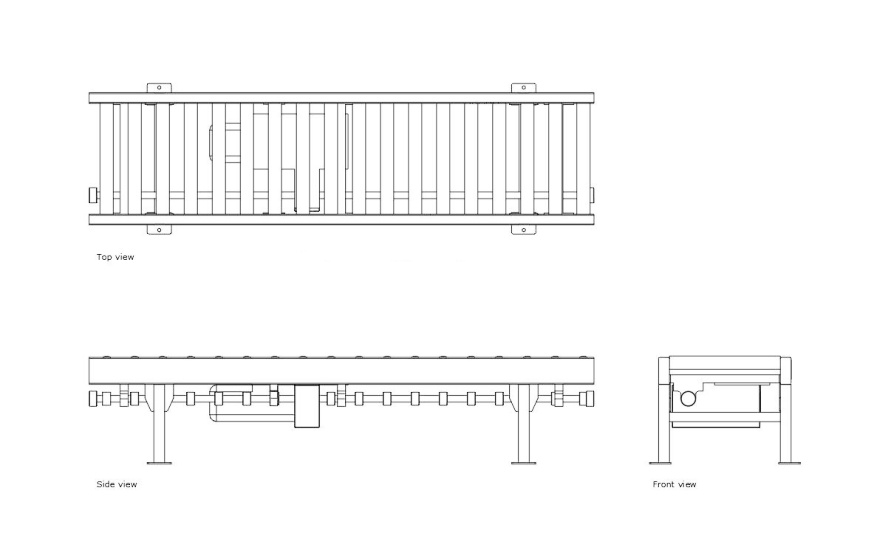
Roller Conveyor Drawing AutoCAD, 2D files focus on the specific needs of roller conveyor systems:
- Precision Layouts: Providing exact dimensions for the placement of rollers and frames.
- Load Specifications: Detailing the maximum load capacity of the roller conveyor.
- Material Selection: Offering insights into the best materials for rollers based on the application.
- Maintenance Guidelines: Highlighting maintenance points for long-term reliability.
- Integration Tips: Advice on integrating roller conveyors with other conveyor systems.
- Modular Designs: Showcasing modular roller conveyor designs for flexible assembly.
- Operational Efficiency: Focusing on designs that enhance the flow of goods and minimize bottlenecks.
Conveyor Belt DWG PDF
Conveyor Belt DWG PDF files serve as a bridge between detailed design documents and broader project understanding:
- Comprehensive Overviews: Presenting conveyor belt systems in a format that’s easy to share and review.
- Cross-Sectional Views: Offering insights into the internal workings and structure of conveyor belts.
- Annotation Rich: Providing detailed notes and explanations alongside the designs.
- Compatibility: Ensuring that stakeholders without CAD software can still review designs.
- Printability: Allowing for easy printing for physical review meetings and discussions.
- Scalability: PDFs maintain clarity and detail, regardless of zoom level.
- Security Features: PDF format supports encryption and watermarking to protect intellectual property.
Each type of conveyor belt DWG file plays a crucial role in the lifecycle of conveyor belt system projects, from initial concept and design to installation and maintenance. By understanding and utilizing these resources effectively, engineers and designers can significantly enhance the efficiency, reliability, and safety of conveyor belt systems.
3D Models and Detailed Drawings: Innovations in Conveyor Belt DWG Design
The evolution of conveyor belt design has been significantly enhanced by the advent of 3D modeling, providing an immersive and detailed approach to engineering. Conveyor belt DWG files in 3D format have become invaluable tools in the design, visualization, and implementation of conveyor systems. Let’s delve into the specifics of how these 3D models and detailed drawings revolutionize conveyor belt design.
Conveyor Belt 3D Model Free Download
Access to conveyor belt DWG 3D models for free download has opened up new possibilities for designers and engineers. Here are nine points highlighting the importance of these resources:
- Enhanced Visualization: Allows for a comprehensive view of the conveyor system from all angles, improving understanding and decision-making.
- Design Accuracy: Facilitates precise measurements and spatial awareness, reducing errors in the design phase.
- Cost-Effective Prototyping: Enables virtual prototyping of conveyor systems, saving costs on physical models.
- Collaborative Design: Simplifies sharing and collaboration among team members, regardless of geographical location.
- Integration with VR: Offers potential for virtual reality walkthroughs, providing an immersive design and review experience.
- Rapid Iterations: Allows for quick modifications and iterations, speeding up the design process.
- Educational Resource: Serves as an excellent tool for training and education, helping new engineers understand complex systems.
- Accessibility: Free downloads democratize access to high-quality 3D models, benefiting smaller firms and individual designers.
- Community Feedback: Enables designers to share their models with a community, receiving valuable feedback and suggestions.
Belt Conveyor 3D Model
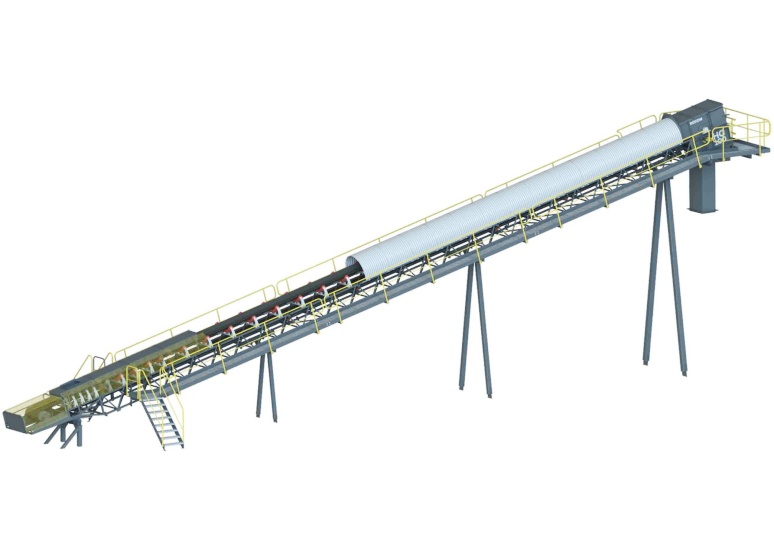
The use of a belt conveyor 3D model brings several benefits to the design of more complex conveyor belt systems:
- Complex Geometry Handling: Easily manages the complexities of curved paths and intricate components.
- Dynamic Simulation: Allows for the simulation of conveyor belt operations, including the movement of materials.
- Material Compatibility Analysis: Helps in selecting the right materials for the belt and other components by visualizing stress points.
- Integration with Engineering Software: Can be seamlessly integrated into engineering analysis software for structural integrity assessments.
- Customization for Clients: Facilitates the creation of customized solutions tailored to specific client requirements.
- Error Detection: Early detection of design flaws or potential issues, saving time and resources.
- Marketing Tool: Acts as a powerful marketing tool, enabling clients to visualize the final product before implementation.
- Safety Evaluations: Allows for the assessment of safety features and emergency access in the design phase.
- Environmental Impact Assessment: Helps in evaluating the environmental impact of the conveyor system, including energy consumption and footprint.
Modular Belt Conveyor 3D Model
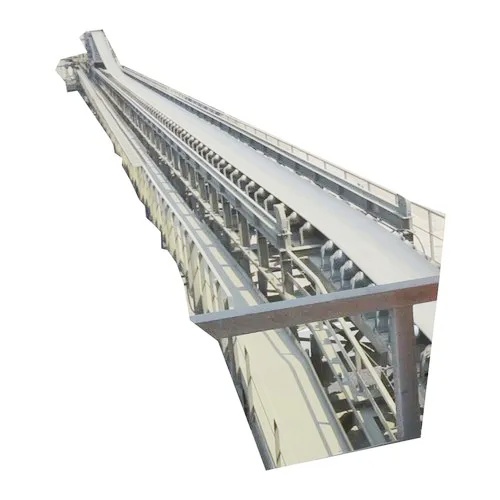
Modular belt conveyor 3D models offer distinct advantages for creating flexible and adaptable design solutions:
- Scalability: Demonstrates how conveyor systems can be scaled up or down based on demand.
- Component Customization: Highlights the ability to customize individual components for specific applications.
- Layout Flexibility: Shows various configurations and layouts, aiding in finding the most efficient setup.
- Ease of Assembly and Disassembly: Visualizes the process of assembly and disassembly, facilitating maintenance and modifications.
- Material Flow Analysis: Simulates the flow of materials through the conveyor, identifying potential bottlenecks.
- Integration with Other Systems: Illustrates how modular conveyors can be integrated with existing systems and machinery.
- Cost-Benefit Analysis: Assists in conducting a cost-benefit analysis by comparing different design options.
- Sustainability: Focuses on sustainable design options, including the use of eco-friendly materials and energy-efficient motors.
- Future Expansion Planning: Plans for future expansion and upgrades, ensuring the design remains relevant and adaptable.
Through the detailed exploration of conveyor belt DWG 3D models, it’s clear that these tools are indispensable in modern conveyor system design, offering a depth of insight and flexibility that traditional 2D drawings cannot match.
Practical Applications and Design Inspiration from Conveyor Belt DWG File
The practical application of conveyor belt DWG files extends beyond mere theoretical designs, playing a crucial role in the actual design and implementation of conveyor systems. This section delves into the foundational aspects of belt conveyor 2D drawings, the inspirational projects found on GrabCAD, and the critical importance of conveyor belt DWG 2D files in the conveyor design process.
Belt Conveyor 2D Drawing
Belt Conveyor 2D drawings are essential in laying the groundwork for the detailed design and successful implementation of conveyor systems. Here are seven key points highlighting their importance:
- Blueprint for Construction: Serve as a detailed blueprint for engineers and constructors, ensuring accurate implementation.
- Dimensional Accuracy: Provide exact dimensions and spacing of components, crucial for the assembly and integration of conveyor systems.
- Material Specification: Detail the materials required for each component, aiding in procurement and quality control.
- Maintenance Access: Highlight maintenance points and access areas, ensuring long-term operability and safety.
- Regulatory Compliance: Ensure designs meet industry standards and safety regulations, critical for legal compliance and worker safety.
- Cost Estimation: Facilitate accurate cost estimation by detailing the scope of materials and labor required.
- Customization and Adaptation: Allow for easy customization and adaptation to specific site conditions or operational requirements.
Belt Conveyor GrabCAD
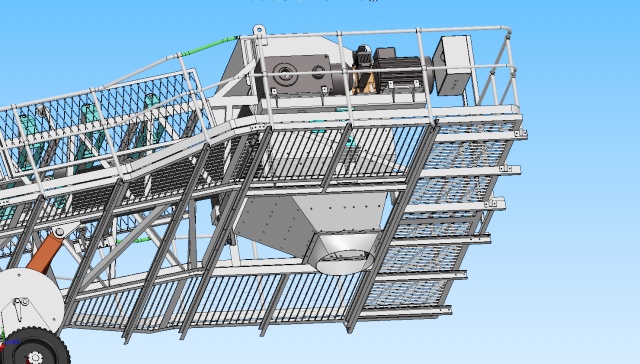
GrabCAD stands as a treasure trove of design inspiration and practical insights, with numerous conveyor belt DWG projects showcasing innovative solutions. Eight notable examples include:
- Automated Sorting System: A detailed model of a conveyor-based sorting system, demonstrating the integration of sensors and sorting mechanisms.
- Modular Conveyor System: Showcases a flexible and scalable conveyor design, adaptable to various operational needs.
- Inclined Belt Conveyor: A design focusing on the challenges and solutions for transporting materials at an incline.
- Food Processing Conveyor: Highlights the design considerations for food safety and hygiene in conveyor systems.
- Warehouse Logistics Conveyor: Offers insights into the design of conveyor systems for efficient warehouse management and logistics.
- Mining Conveyor System: Details the robust and durable design required for the harsh conditions of mining operations.
- Pharmaceutical Conveyor: Showcases the precision and cleanliness required in pharmaceutical conveyor systems.
- Recycling Facility Conveyor: Demonstrates the design of conveyors for sorting and processing recyclable materials.
Find the perfect conveyor belts for your needs!
Conveyor 2D DWG
The significance of Conveyor 2D DWG files in the initial stages of conveyor belt design projects cannot be overstated. Here are ten points that underscore their importance:
- Foundation of Design: Act as the foundational document from which all design iterations begin.
- Quick Conceptualization: Enable quick conceptual sketches and feasibility studies.
- Stakeholder Communication: Facilitate clear communication with stakeholders through easily interpretable diagrams.
- Integration Planning: Assist in planning the integration of conveyor systems with existing infrastructure.
- Pathway Design: Critical for designing the pathway and flow of materials through a facility.
- Load Analysis: Provide the basis for initial load and stress analysis on the conveyor structure.
- Operational Workflow: Help in visualizing the operational workflow and identifying potential bottlenecks.
- Safety Considerations: Highlight safety features and emergency stop mechanisms in the design phase.
- Environmental Impact: Allow for the assessment of environmental impacts, such as energy usage and noise levels.
- Prototype Development: Serve as a guide for developing scaled-down prototypes or simulation models.
Through the practical application of conveyor belt DWG files, from 2D drawings to detailed 3D models, designers and engineers can not only ensure the technical viability of conveyor systems but also draw inspiration from a global community of professionals. This blend of practicality and creativity is essential for advancing the field of conveyor system design.
Last Updated on June 20, 2024 by Jordan Smith
Jordan Smith, a seasoned professional with over 20 years of experience in the conveyor system industry. Jordan’s expertise lies in providing comprehensive solutions for conveyor rollers, belts, and accessories, catering to a wide range of industrial needs. From initial design and configuration to installation and meticulous troubleshooting, Jordan is adept at handling all aspects of conveyor system management. Whether you’re looking to upgrade your production line with efficient conveyor belts, require custom conveyor rollers for specific operations, or need expert advice on selecting the right conveyor accessories for your facility, Jordan is your reliable consultant. For any inquiries or assistance with conveyor system optimization, Jordan is available to share his wealth of knowledge and experience. Feel free to reach out at any time for professional guidance on all matters related to conveyor rollers, belts, and accessories.



